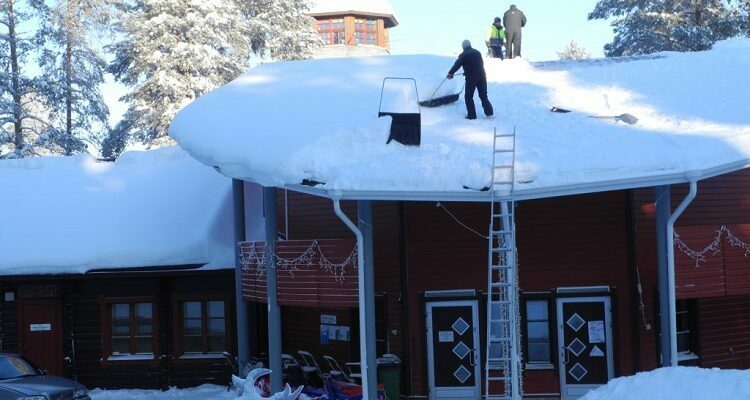Developing snow roof removal plans is important in preparing your property for winter. It can help you prevent the damage that snow can cause and can also help you avoid fines and other penalties for not adhering to city ordinances.
Table of Contents
Avoiding Salt Products on Your Roof
If you’re doing roof snow removal yourself, you need to avoid using salt products on your roof. Salt discolors shingles and kills grass when it melts. Moreover, salt is toxic and dangerous to plants and animals. The best way to use salt is to hire a licensed contractor. While rock salt and other salt-based products are highly effective at removing snow and ice, they damage roof materials. For instance, they may cause perforated gutters or rusted flashing, resulting in a costly repair. Instead of salt products, you can use calcium chloride.
Another thing to consider is the safety of your home. Rock salt can damage your roof by corroding nails that hold shingles to the roof. These nails can break and cause leaks, which can harm your home’s interior. Moreover, rock salt can damage your garden’s soil. It is best to use calcium chloride-based deicers instead of rock salt. Calcium chloride has less corrosive properties than sodium chloride and is, therefore, safe for roofs. It also lowers the freezing point of water, which helps melt ice dams. While doing roof snow removal, you should also avoid dropping weight on the roof. Even if the snow is small, it can cause damage to the roof. It is estimated that an inch of snow will weigh approximately 20 pounds, but it can be even heavier. Therefore, it’s best to drop the snow so it won’t cause any problems.
Avoiding Piling Snow Near the Side of The Building
When piling snow on a roof, avoid piling it near the side of the building. This will prevent the snow from falling off the roof and forming a bank against the side of the building. This will help to prevent water from entering the basement or crawl space. Because snow doesn’t blow away in an even fashion, it will tend to collect on the slopes of a semi-sheltered roof. The amount of snow that will accumulate on the slope will depend on the roof shape and the direction of the wind. For more information on how to remove snow around the house, visit this website: https://colonialsun.com/
Creating A Map of Your Roof
When preparing to remove snow from your roof, you must first know how much snow is on your roof. Often, the snow that appears on the ground is not necessarily on the roof, as it can be added or removed by wind. It can also slide from one roof plane to another if it is sloped. Therefore, it is important to map the snow before beginning. A professional roofer can create a detailed map of your roof, indicating any roof features, such as drainage systems and areas where larger amounts of snow accumulate. In addition, they can help you create a snow removal plan to help you mitigate the risks of snow build-up. It is important to follow FEMA guidelines and plan before snow falls. Licensed professionals can take the snow off your roof safely and efficiently. These professionals will also explain safety measures and considerations that should be taken during the process.
Clean-Up Operations to Push Back Existing Snow
During a snowstorm, a snow removal operation is performed to push back snow from the roadways to allow room for storage in the right-of-way. The operation occurs when snow accumulation exceeds four inches. Its purpose is to clear snowbanks and snow banks so emergency vehicles can turn safely. It also helps to clear the path for two vehicles to pass. It can take several days for clean-up operations to complete. Secondary work, involving plowing out the wider areas of roadways, begins after the storm subsides. The purpose of these operations is to prepare for the next snowfall. The snow and ice control plan are developed to address the protection of the City property, public safety, environmental impacts, and ability to deliver emergency services. It also provides a uniform understanding of the operational procedures and priorities. To discover more about the ideal roof shape for snow, visit this website: https://newstable.org/






Comments